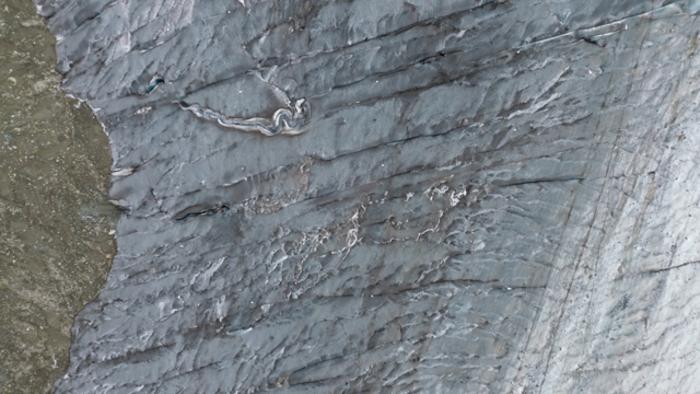In a groundbreaking new study, researchers have leveraged fiber optic technology to monitor the seismic activity of crevasses on glaciers, potentially revolutionizing how we understand and track glacier dynamics. The study, presented at the Seismological Society of America’s Annual Meeting, focuses on the Gornergletscher glacier in Switzerland, where a dense grid of fiber optic cables was deployed to detect the sounds of crevasses—essentially breaks in the ice that can signal significant environmental changes.
Crevasses play a crucial role in glacier stability, as they serve as conduits for meltwater to access the glacier’s rocky base, which can accelerate glacier movement and, consequently, melting. Understanding the seismic signals produced by these crevasses offers a unique opportunity to study the underlying mechanical processes at play within glaciers, particularly as climate change continues to influence glacial systems worldwide. Traditional methods of measuring these seismic events, however, are often hindered by the challenging and treacherous nature of glacier environments, making this technological advancement particularly timely.
In their research, scientists highlighted how the source of seismic activity from glacier icequakes differs fundamentally from those produced by tectonic earthquakes. According to Tom Hudson from ETH Zürich, crevasses act as “crack sources,” creating seismic signals that result from a fracture opening in one direction, unlike the lateral shear motions seen in tectonic settings. Such distinctions are vital for accurately interpreting data and understanding the unique behaviors of glacier seismicity.
The deployment of fiber optics in this research represents a pioneering approach. The technology enables the detection of seismic events with unprecedented precision and detail, capturing data from locations that conventional seismic sensors cannot access. This method not only offers a clearer glimpse into the mechanical stability of the glacier but also demonstrates fiber optics’ potential utility in broader applications, such as monitoring carbon storage reservoirs or geothermal energy systems.
Hudson noted the remarkable proximity of their fiber optics to the seismic events they measured, with some quakes occurring within just ten meters of the deployed cables. This level of detail promises a richer understanding of the physical processes behind crevassing and offers a test case for future implementations of this technology in more complex geological environments.
Another significant aspect of the method lies in the researchers’ success in maintaining optimal coupling of the fiber optic cables with the glacier’s surface. During their deployment, they encountered favorable seasonal conditions that facilitated this process. When the fiber optic cables were exposed to sunlight, they gradually melted into the glacier, optimizing contact and ensuring that the devices captured accurate seismic data. This innovative approach has set a new standard for how fiber optic technology can be employed in challenging terrains.
Through their research, the team successfully detected and pinpointed 951 individual icequakes within the study area. The resulting seismic waveforms displayed striking oscillations known to be associated with water movement in crevasses, which can produce resonant signals during seismic activities. Interestingly, their analysis suggested that this resonant activity was likely a consequence of seismic waves interacting with the fractures within the crevasses rather than solely due to water dynamics.
Comparative analysis against traditional seismic node data revealed that fiber optic systems yield significantly greater volumes of data—almost 20 times more than conventional arrangements. While this increase in data volume poses processing challenges, it also allows researchers to visualize the full spectrum of seismic wavefields, offering deeper insights into the behavior of ice during seismic events.
Furthermore, the sensitivity of fiber optic cables to various signal frequencies unlocks the potential to measure long-term changes in the glacier’s physical state. The capacity to detect low-frequency signals offers researchers the ability to monitor temporal flexures in the ice, which are critical for understanding both short-term dynamics and long-term climate-related changes.
Moving forward, Hudson and his colleagues aim to develop an even more intricate understanding of ice structure using fiber optics. By quantifying fracture extent and density, they hope to ascertain the degree of damage within the ice and locate the sources of seismic activity more accurately than ever before. This depth of analysis holds significant implications not only for glaciology but also for the broader understanding of natural systems vulnerable to climatic shifts.
The study highlights the transformative potential of fiber optic technology in geological research and emphasizes an urgent need for innovative solutions to study the changing dynamics of our planet’s ice systems. As climate change accelerates glacial melting, understanding the intricate behaviors of crevasses and the seismic events associated with them will be indispensable for predicting future environmental impacts.
As researchers continue to refine and expand this technology, there is an optimistic view that similar methods could yield promising results in understanding complex geological phenomena beyond glaciers. This pioneering research underscores the importance of interdisciplinary approaches in addressing the challenges posed by ongoing climate change and natural resource management in vulnerable environments.
In conclusion, the advent of fiber optic technology offers an exciting frontier in the field of glaciology, poised to enhance our understanding of glacier dynamics and improve monitoring capabilities in innumerable applications. The innovative implementation of this technology on Gornergletscher serves as a promising indication of what the future might hold for both scientific research and the practical management of natural resources in an era of rapid environmental transformation.
—
Subject of Research: Fiber Optic Monitoring of Glacial Seismic Activity
Article Title: Groundbreaking Fiber Optic Technology Reveals Insights into Glacier Dynamics
News Publication Date: October 2023
Web References: https://meetings.seismosoc.org/
References: Research studies presented at the Seismological Society of America’s Annual Meeting.
Image Credits: Photo by Tom Hudson
Keywords
Glaciers, Fiber optics, Seismology, Climate Change, Icequakes, Gornergletscher, Glaciology, Earth Sciences.
Tags: challenges in glacier environment studiesenvironmental changes in glaciersETH Zürich research on crevassesfiber optic technologyglacier crevasses monitoringglacier dynamics and stabilityGornergletscher glacier studyimpact of climate change on glaciersinnovative glacier research methodsmeltwater and glacier movementseismic activity in glaciersseismic signals from icequakes





